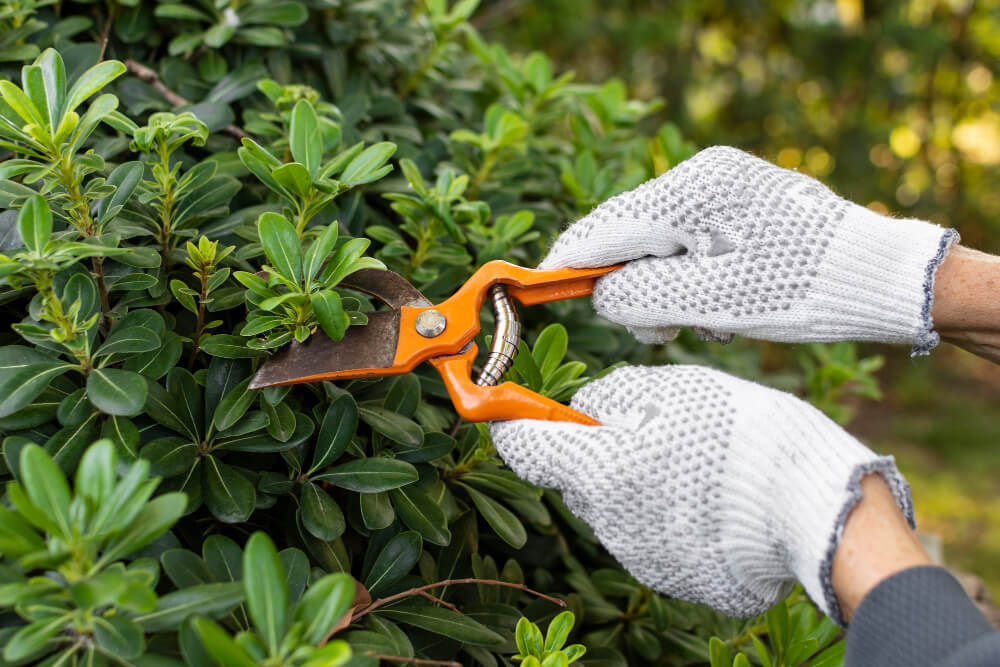It’s difficult enough to maintain a stunning, well-kept, and spectacular landscape, right? There is a lot of responsibility, multiple jobs, and a lot to keep up with. Add all of that to the fact that you live in Florida, the home of erratic and unpredictable weather, and you find yourself facing a whole new set of difficult, high-maintenance, and most definite challenges in landscape maintenance, St. Augustine, FL.
Drought-resistant landscaping solutions can help you design the garden of your dreams even if you’re limited by water or haven’t had much rain. You may create low-cost, drought-tolerant landscaping with easy-to-implement techniques or by embracing measures that require a bit more time and work.
Drought-tolerant ideas for landscape maintenance, St. Augustine
In addition to saving water, drought-tolerant landscape maintenance, St. Augustine, FL can reduce water usage, promote biodiversity, and improve the aesthetics of our outdoor areas. Continue reading to learn some low-cost, drought-tolerant landscaping ideas that will assist you in designing a thoughtful, well-thought-out landscape.
1. Replace the grass
Thanks to lush, low-water species like Mexican bush sage, pink alstroemeria, and shrub and climbing roses, this drought-tolerant front yard exudes cottage garden charm. In place of thirsty turf, the area has a stone patio that lets valuable rainfall trickle through the spaces between the stones to irrigate the surrounding area. Vibrant Adirondack chairs give the drought-tolerant front yard one more burst of consistent color.
2. Properly mulch the flower beds
Mulch is defined as “organic or inorganic material that can be used in your garden or landscape in areas that are hard to maintain or prone to erosion” by the University of Florida.
It is applied to the soil surrounding lawns, trees, bushes, and plants. Mulch acts as a shield between the soil and the sun. They prevent evaporation and allow the soil to retain moisture and stay cool. Certainly, they also add a wonderful nitrogen boost to your soil and prevent weed growth.
3. Make use of boulders
Stones and boulders make excellent drought-tolerant garden elements for commercial landscaping St. Augustine, FL. They provide visually striking focal points that enliven a planting area without requiring watering. Furthermore, Alpine plants with low growth rates and ground covers provide a softening effect on stones and soil, aiding in cooling and moisture retention.
The expansive rock garden is a part of the drought-tolerant commercial landscaping St. Augustine, FL, and the design may be readily adjusted to fit in a standard yard. Best of all, rock gardens require little upkeep once they are established.
4. Consider a water installation
Although it might not seem like the best option for drought-tolerant landscape maintenance, St. Augustine, FL, a well-designed fountain can absorb and recycle water. The water-wise yard can be adorned with a tiny raised pond and a fountain.
The vibrant foliage of lamb’s ear and Japanese wild grass works to temper the heat-trapping effects of the pavers. They also soften the hardscaping. In strategic places, like the large spaces between stones, groundcovers like the thyme pictured above also aid in creating a cooling effect.
5. Minimize the lawn
Grass is one of the biggest water-guzzlers in a regular yard. Even in a normal summer, many grass varieties require regular irrigation to stay green, let alone during a drought. You may quickly cut down on the quantity of irrigation your yard needs by reducing the amount of turf you tend to.
An eye-catching combination of native stone, decorative grasses, and seasonal flowering shrubs should take the place of the lawn. Your front yard can have drought-tolerant commercial landscaping St. Augustine, FL that looks fantastic and requires no mowing if you add rock mulch.
6. Harvest rainwater, whenever possible
Gathering and storing water that would otherwise fall to the ground is known as rainwater harvesting. You may irrigate your yard, replenish your swimming pool, and hydrate your plants without depending on Mother Nature if you have access to rainwater nearby. Include a rain barrel station in your design.
To accomplish this, put multiple sizable containers beneath the downspouts on your roof to collect runoff. Cover their apertures with screens to keep insects and debris out. For every 1,000 square feet, one inch of precipitation results in around 600 gallons of collected water. To use the water that has been stored, you can install spigots on your rain barrels and connect hoses.
Final Thoughts
Drought-tolerant landscaping strikes a lovely balance between environmental responsibility and designing attractive. They are useful outdoor spaces that can endure and adapt to extended droughts by carefully taking these variables into account. Instead of fighting the unpredictable elements, your landscape can be something you live in peace with a lot of love.
